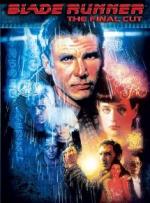|
This section contains 8,149 words (approx. 28 pages at 300 words per page) |

|
SOURCE: Marder, Elissa. “Blade Runner's Moving Still.” Camera Obscura, no. 27 (September 1991): 89-107.
In the following essay, Marder discusses the interplay between artificial and organic beings in Blade Runner and examines questions of filmic representation regarding the relationship between human spectators and visual technology.
In the decade that has elapsed since Blade Runner's first commercial release, Ridley Scott's 1982 science-fiction film has been retroactively hailed as one of the most powerful and influential examples of cinematic postmodernism.1 Despite the fact that Blade Runner has achieved almost canonical status in the annals of film theory,2 the discomfort displayed by its earliest critics serves as a telling index of the film's subversive depiction of a posthuman condition. Released in the shadow of the cozy humanism of E.T., which treated the alterity of the extraterrestrial with the familiarity of a domesticated pet, Blade Runner alienated its original audiences. Most of...
|
This section contains 8,149 words (approx. 28 pages at 300 words per page) |

|


